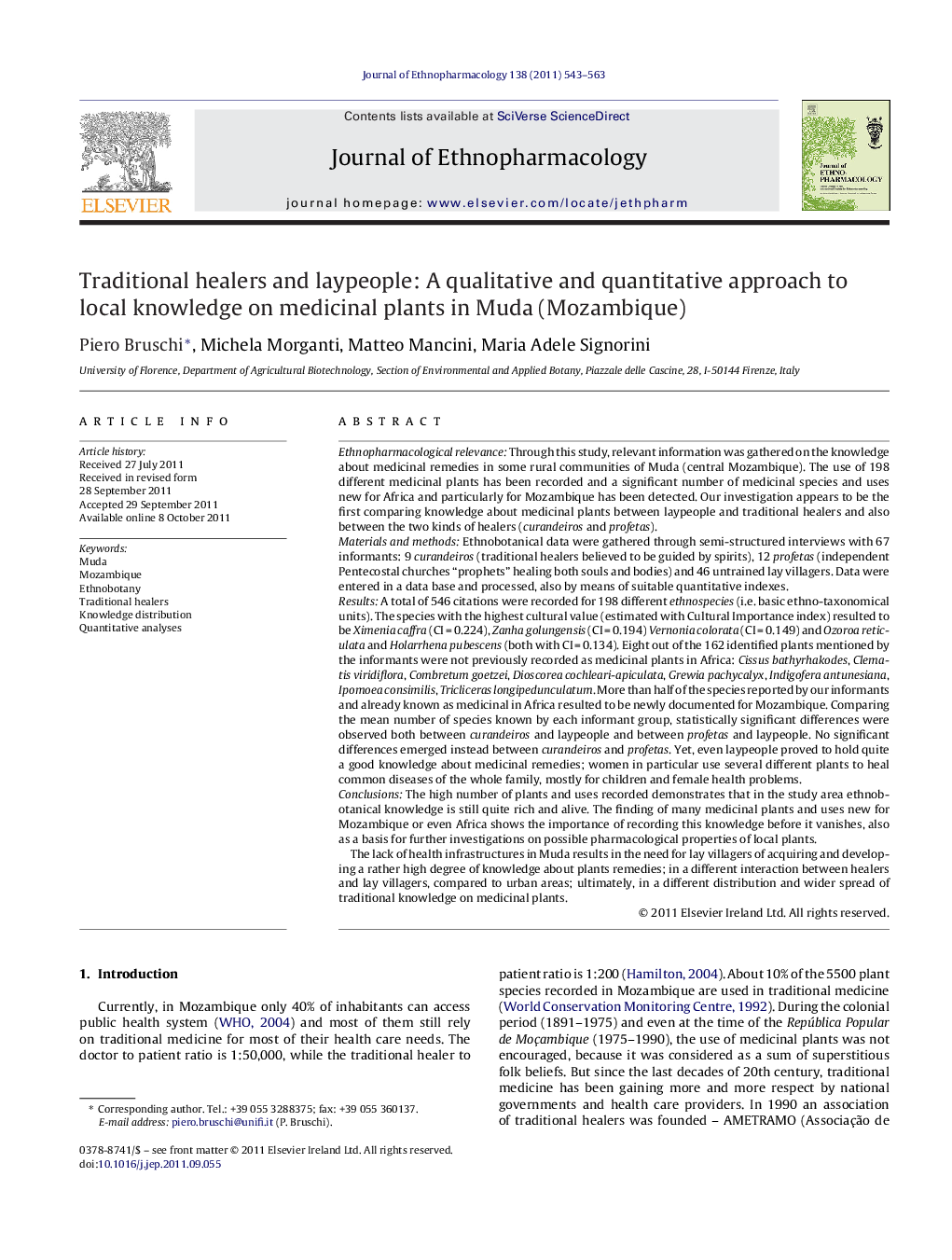| کد مقاله | کد نشریه | سال انتشار | مقاله انگلیسی | نسخه تمام متن |
|---|---|---|---|---|
| 5838972 | 1123984 | 2011 | 21 صفحه PDF | دانلود رایگان |

Ethnopharmacological relevanceThrough this study, relevant information was gathered on the knowledge about medicinal remedies in some rural communities of Muda (central Mozambique). The use of 198 different medicinal plants has been recorded and a significant number of medicinal species and uses new for Africa and particularly for Mozambique has been detected. Our investigation appears to be the first comparing knowledge about medicinal plants between laypeople and traditional healers and also between the two kinds of healers (curandeiros and profetas).Materials and methodsEthnobotanical data were gathered through semi-structured interviews with 67 informants: 9 curandeiros (traditional healers believed to be guided by spirits), 12 profetas (independent Pentecostal churches “prophets” healing both souls and bodies) and 46 untrained lay villagers. Data were entered in a data base and processed, also by means of suitable quantitative indexes.ResultsA total of 546 citations were recorded for 198 different ethnospecies (i.e. basic ethno-taxonomical units). The species with the highest cultural value (estimated with Cultural Importance index) resulted to be Ximenia caffra (CIÂ =Â 0.224), Zanha golungensis (CIÂ =Â 0.194) Vernonia colorata (CIÂ =Â 0.149) and Ozoroa reticulata and Holarrhena pubescens (both with CIÂ =Â 0.134). Eight out of the 162 identified plants mentioned by the informants were not previously recorded as medicinal plants in Africa: Cissus bathyrhakodes, Clematis viridiflora, Combretum goetzei, Dioscorea cochleari-apiculata, Grewia pachycalyx, Indigofera antunesiana, Ipomoea consimilis, Tricliceras longipedunculatum. More than half of the species reported by our informants and already known as medicinal in Africa resulted to be newly documented for Mozambique. Comparing the mean number of species known by each informant group, statistically significant differences were observed both between curandeiros and laypeople and between profetas and laypeople. No significant differences emerged instead between curandeiros and profetas. Yet, even laypeople proved to hold quite a good knowledge about medicinal remedies; women in particular use several different plants to heal common diseases of the whole family, mostly for children and female health problems.ConclusionsThe high number of plants and uses recorded demonstrates that in the study area ethnobotanical knowledge is still quite rich and alive. The finding of many medicinal plants and uses new for Mozambique or even Africa shows the importance of recording this knowledge before it vanishes, also as a basis for further investigations on possible pharmacological properties of local plants.The lack of health infrastructures in Muda results in the need for lay villagers of acquiring and developing a rather high degree of knowledge about plants remedies; in a different interaction between healers and lay villagers, compared to urban areas; ultimately, in a different distribution and wider spread of traditional knowledge on medicinal plants.
231
Journal: Journal of Ethnopharmacology - Volume 138, Issue 2, 18 November 2011, Pages 543-563